Strain
Type of resources
Available actions
Topics
Keywords
Contact for the resource
Provided by
Years
Formats
Update frequencies
Scale
-
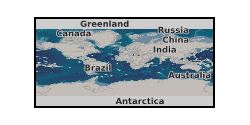
The use of synthetic samples for rock physics experiments in the lab is a common practice for reservoir characterization and reservoir studies. This dataset gather ultrasonic P- and S-wave velocities and attenuations, electrical resistivity, axial and radial strains, permeability and mineralogical composition, of two synthetic and two natural sandstones, measured at variable realistic reservoir conditions of stress. The data were collected during an original study which aimed to assess the extent to which the measured properties between synthetic and natural sandstones are comparable. The work was accepted for publication in Geophysical Prospecting on the 01/10/2018, which can be accessed following the link: https://doi.org/10.1111/1365-2478.12699 Falcon-Suarez, I.H., Amalokwu, K., Robert, K., North, L., Best, A.I., Delgado-Martin, J., Callow, B., Sahoo, S.K. (accepted). Comparison of stress dependent geophysical, hydraulic and mechanical properties of synthetic and natural sandstones for reservoir characterisation and monitoring studies. Geophysical Prospecting
-
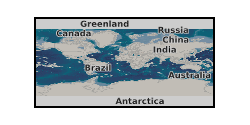
Cyclic loading stress-strain data in polycrystalline antigorite serpentinite, at various confining pressures and temperatures. This dataset is used and fully described/interpreted in the paper: David, E.C., N. Brantut, and G. Hirth, Sliding crack model for non-linearity and hysteresis in the triaxial stress-strain curve of rock, and application to antigorite deformation, submitted to J. Geophys. Res. Overview Rock type Vermont antigorite-rich (>95%) serpentinite. See submitted paper for details. The sample is isotropic. Apparatus Oil-medium triaxial apparatus (Rock Physics Ensemble, University College London). For description, see David el al. (2018), Absence of stress-induced anisotropy during brittle deformation in antigorite serpentinite, J. Geophys. Res., 123, 10616-10644. Griggs-type solid medium apparatus (Brown University). For description, see David, E.C., N. Brantut, and G. Hirth, Sliding crack model for non-linearity and hysteresis in the triaxial stress-strain curve of rock, and application to antigorite deformation, submitted to J. Geophys. Res., and references therein. Files description 1-existing data from David et al., JGR, 2018: The text file "Vermont-antigorite-roomT-150MPa-stress-strain-cyclicloading-UCLtriax" gives the axial stress (in direction 1, see submitted paper) and the axial strain (in percent, in direction 1, see submitted paper), at room temperature and 150 MPa confining pressure, in the oil triaxial apparatus at UCL. The mechanical data (stress, strain) have been corrected from internal friction and machine stiffness, respectively. The data are from David el al. (2018), Absence of stress-induced anisotropy during brittle deformation in antigorite serpentinite, J. Geophys. Res., 123, 10616-10644. 2-new data: The text file "Vermont-antigorite-roomT-1000MPa-stress-strain-cyclicloading-Griggsapparatus" gives the axial stress (in direction 1, see submitted paper) and the axial strain (in percent, in direction 1, see submitted paper), at room temperature and 1000 MPa confining pressure, in Griggs solid medium apparatus at Brown University. The mechanical data (stress, strain) have been corrected from internal friction and machine stiffness, respectively. The text file "Vermont-antigorite-400C-1000MPa-stress-strain-cyclicloading-Griggsapparatus" is the equivalent of the file described just above at a temperature of 400C. The text file "Vermont-antigorite-500C-1000MPa-stress-strain-cyclicloading-Griggsapparatus" is the equivalent of the file described just above at a temperature of 500C.
-
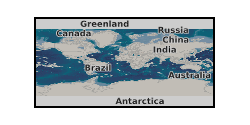
These data contain time series of stress, strain, confining pressure, elastic wave velocities of samples of Vermont antigorite and Westerly granite deformed under hydrostatic and triaxial conditions at room temperature and dry conditions. This dataset is used and fully described/interpreted in the paper: David, E.C., N. Brantut, L.N. Hansen and T.M. Mitchell, Absence of stress-induced anisotropy during brittle deformation in antigorite serpentinite, submitted to J. Geophys. Res.
-
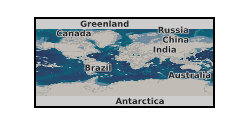
NERC grant NE/R013535/1. Here we present the dataset collected during a brine-CO2 flow-through test using a synthetic sandstone with oblique fractures, performed under realistic reservoir conditions stress. We monitored geophysical, mechanical and transport properties, for drainage and imbibition conditions, representative of the injection and post-injection stages of the CO2 storage process. We collected ultrasonic P- and S-wave velocities and their respective attenuation factors, axial and radial strains, electrical resistivity, pore pressure, temperature and brine and CO2 partial flows (from which relative permeability was later calculated).
-
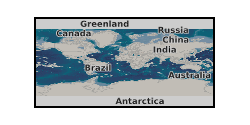
This dataset contains raw experimental triaxial testing data as outlined in "Castagna, A., Ougier‐Simonin, A., Benson, P. M., Browning, J., Walker, R. J., Fazio, M., & Vinciguerra, S. (2018). Thermal damage and pore pressure effects of the Brittle‐Ductile transition in Comiso limestone. Journal of Geophysical Research: Solid Earth, 123(9), 7644-7660.s, http://dx.doi.org/10.1029/2017JB015105". The data is provided in a .zip folder containing the files of 16 experiments that are accompanied by a README file for introduction. Files format is Microsoft Excel Worksheet (.xlsx) and data are tabulated. Each file contains the corresponding relevant sample’s details, and each column of data is clearly labelled, units included. For each experiment, time, radial and axial pumps volume displacements and pressures, top and bottom pore fluid pumps volume displacements and pressures, internal temperature, LVDT signals were recorded. Twenty right cylindrical samples of ‘Comiso’ limestone (Ragusa Formation; Sicily) were tested in triaxial compression at a range of confining pressures simulating depths of 290 m, 620 m, 1.2 km, and 2.0 km respectively, assuming an average density of the over-burden load of 2470 kg/m3. Prior to strength test, each sample was either oven dried (ca. 12 hours at 85 °C followed by cooling in a desiccator for 1 hour) or water saturated (samples in distilled water under vacuum for 24 hours). A subset of these samples has also been thermally treated at 150, 300, 450 and 600oC to induce thermal cracking prior to the mechanical testing. All tests were conducted at 10-5 s-1 axial strain rate in assumed drained conditions when relevant, and at room temperature. For saturated tests, the initial loading was applied in two steps, first by increasing Pc hydrostatically (σ1=σ2=σ3) until the desired confining pressure was reached, and then introducing pore fluid pressure, as per the functionality of the experimental set-up. The experiments were conducted by Drs A. Castagna, M. Fazio and P. Benson using the Snachez triaxial cell at the Rock Mechanics Laboratory of the University of Portsmouth. All responsible for the collection and initial interpretation of the data. Only 17 experiments are reported in this set of data; the missing 3 datasets are believed to be only available on the local computer storage of the triaxial apparatus used at that time.
 NERC Data Catalogue Service
NERC Data Catalogue Service